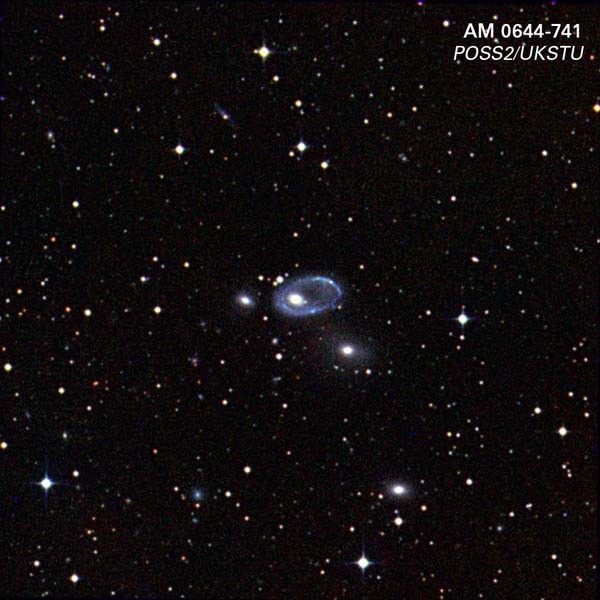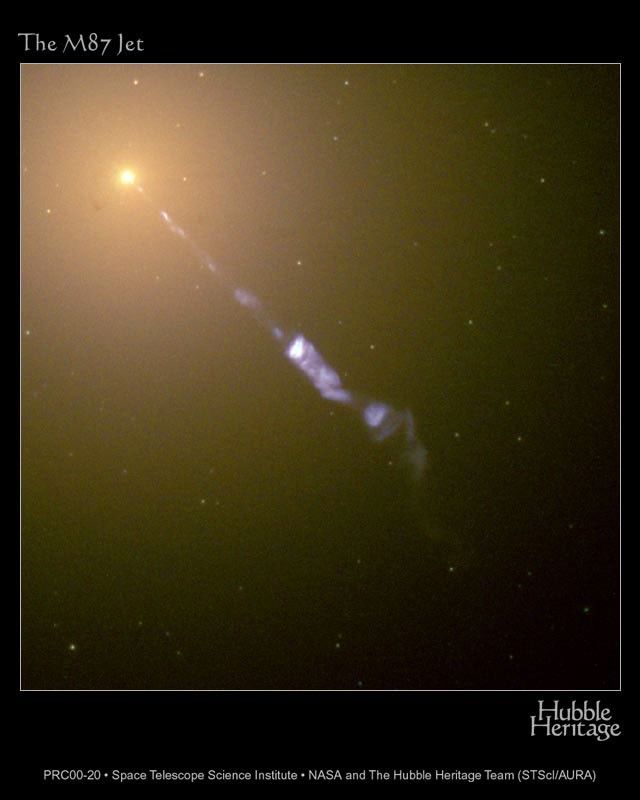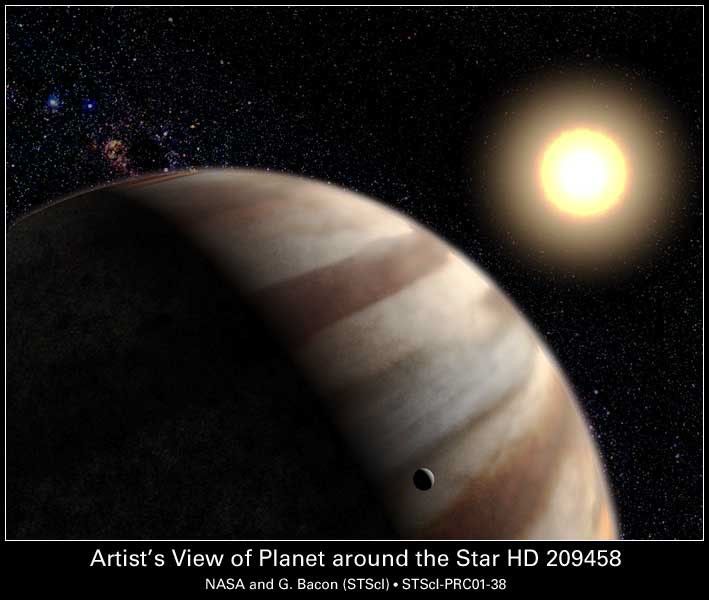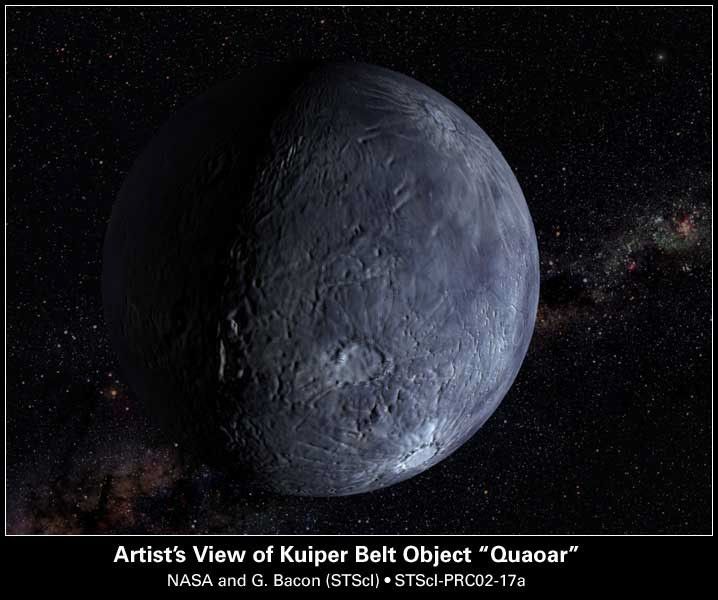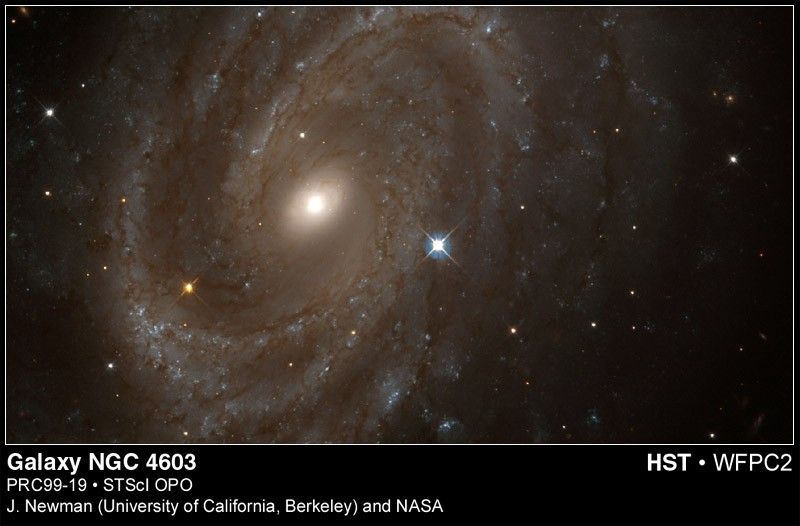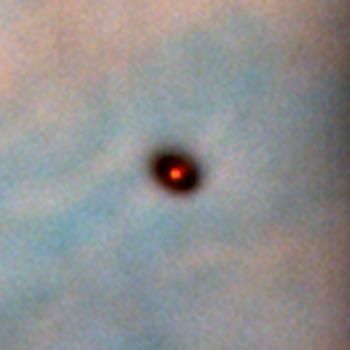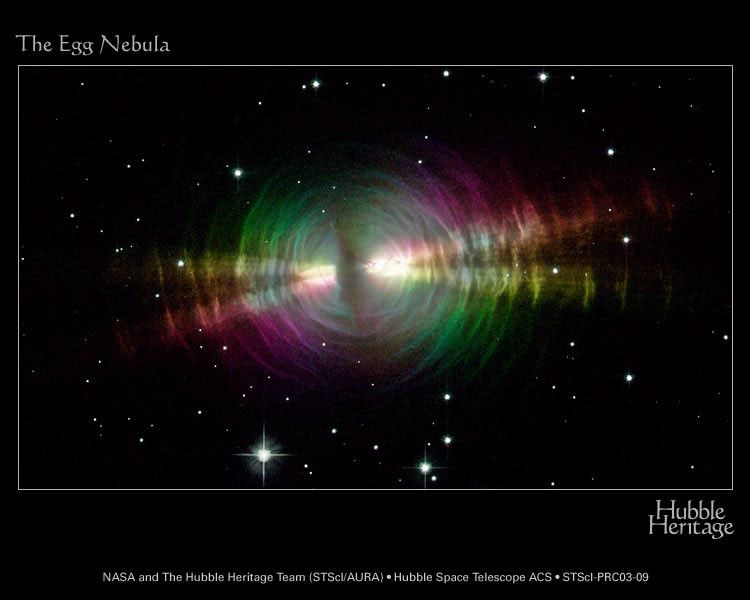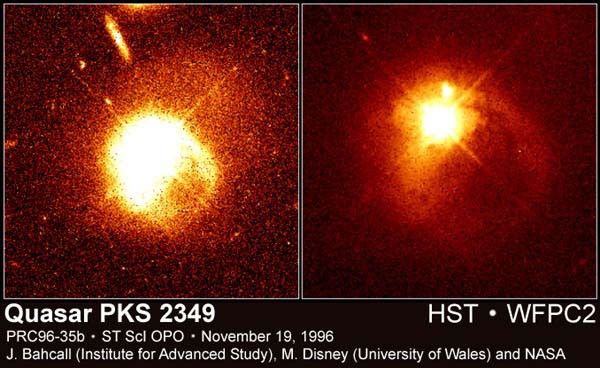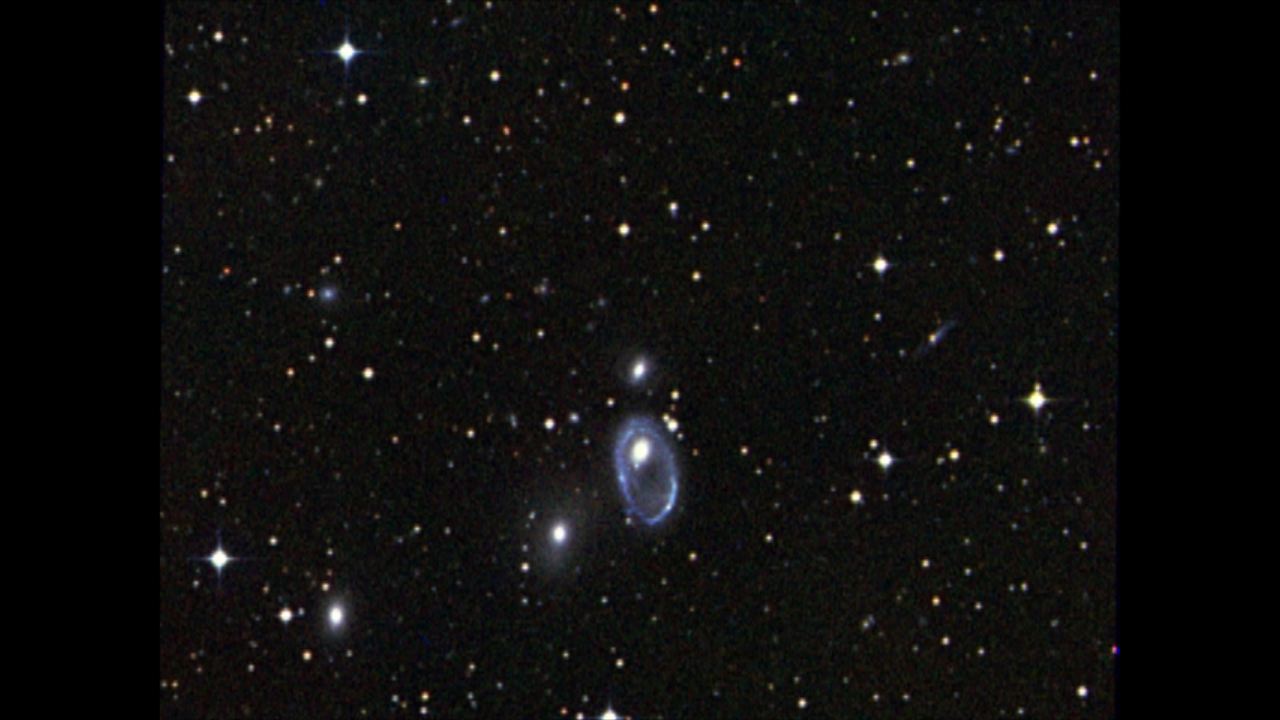Background Information: Hubble's Top Ten Science Findings
In its 14-year lifetime of surveying the heavens, the Hubble Space Telescope has witnessed the birth of stars, has looked far across the universe to see young galaxies, and has provided proof that an unseen force called "dark energy" dominates the cosmos.
Here is a synopsis of the Earth-orbiting observatory's most important science discoveries.
Back to the End of the 'Dark Ages'
How do astronomers know when they have looked too far into space? Maybe when they have run out of galaxies to view. That hasn't happened yet. Astronomers continue to use the Hubble telescope to look deeper and deeper into space, uncovering younger and younger galaxies. (Probing the distant cosmos means looking farther back in time.)
The most recent foray into deep space is called the Hubble Ultra Deep Field (HUDF), which represents the deepest portrait of the visible universe ever achieved by humankind. The snapshot reveals the first galaxies to emerge from the so-called "dark ages," the time shortly after the big bang when the first stars reheated the cold, dark universe. The new image should offer new insights into what types of objects reheated the universe long ago. Some may be the farthest ever seen, existing when the universe was just 400 million years old.
The HUDF is the latest in a string of Hubble surveys into the farthest regions of the cosmos. The Great Observatories Origins Deep Survey and the Hubble Deep Fields also studied galaxies stretching far back in time. By studying galaxies at different epochs, astronomers can see how galaxies change over time. The process is analogous to a very large scrapbook of pictures documenting the lives of children from infancy to adulthood.
The deep views also revealed that the early universe was a fertile breeding ground for stars. Observations showed that the universe made a significant portion of its stars in a torrential firestorm of star birth which abruptly lit up the pitch-dark heavens just a few hundred million years after the big bang. Though stars continue to be born today in galaxies, the star birth rate could be a trickle compared with the predicted gusher of stars in those opulent early years.
Hunting for Black Holes
Hubble managed to probe the dense, central regions of galaxies, providing decisive evidence that supermassive black holes—compact "monsters" that gobble up any material that ventures near them— reside in the centers of many galaxies, even perhaps in globular clusters, a densely packed collection of hundreds of thousands or millions of stars.
These elusive "eating machines" cannot be observed directly, because nothing, even light, escapes their stranglehold. But the telescope provided indirect, yet compelling, evidence of their existence. The telescope also helped astronomers determine the masses of several black holes by measuring the velocities of material whirling around them.
The telescope's census of many galaxies showed an intimate relationship between galaxies and their resident black holes. The survey revealed that a black hole's size is dependent on the mass of its host galaxy's bulge, a spherical region in the center of a galaxy consisting of stars. Monstrous galaxies, for example, have titanic black holes. This close relationship may be evidence that black holes co-evolved with their galaxies, feasting on a measured diet of gas and stars residing in the hearts of those galaxies.
An Accelerating Universe
Several Hubble observations of far-flung exploding stars, called supernovae, provided convincing evidence that a mysterious, unseen force called dark energy dominates the cosmos. Dark energy shoves galaxies away from each other at ever-increasing speeds and works in opposition to gravity. The Hubble observations place constraints on the nature of dark energy, revealing that it does appear to be a constant presence as predicted. The discoveries also reinforce the idea that the cosmos began accelerating, when the universe was less than half its current age—recently, in cosmologic terms.
Cosmologists understand almost nothing about dark energy even though it appears to comprise about 70 percent of the universe. They are desperately seeking to uncover its two most fundamental properties: its strength and its permanence.
Dark energy was first proposed, and then discarded by Albert Einstein early in the last century. Calling it the "cosmological constant," Einstein theorized about this repulsive force in an attempt to balance the universe against its own gravity.
The Planet Chase
Hubble has made significant contributions to the study of planets outside our solar system by making the first direct measurements of the chemical composition of an extrasolar planet's atmosphere. The orbiting observatory also has taken precise measurements of the masses of two distant worlds, one of which is the oldest known planet.
The unique observations demonstrate that it is possible with Hubble and other telescopes to measure the chemical makeup of extrasolar planet atmospheres. In three separate observations, Hubble analyzed the atmospheric composition of a planet, which circles the Sun-like star HD 209458. As the planet passed in front of its parent star, Hubble measured light from the star filtering through the planet's atmosphere. The planet would have to be a bit larger than Jupiter to block enough light—about one percent—to be measurable by Hubble.
Imprinted on the filtered light were the signatures of sodium, hydrogen, carbon, and oxygen. Hubble discovered that the planet's supply of hydrogen was evaporating into space. A huge envelope of hydrogen surrounds the planet, causing it to appear somewhat like a comet with a tail trailing behind the planet. Oxygen and carbon are being pulled out of the planet's atmosphere by the rush of hydrogen evaporating into space
The orbiting observatory also precisely measured the mass of the farthest and oldest known planet. The ancient planet, about 13 billion years old, orbits a peculiar pair of burned-out stars in the crowded core of a collection of stars, called a globular cluster. The Hubble findings close a decade of speculation and debate as to the true nature of this ancient world, which takes a century to complete each orbit. The planet is 2.5 times the mass of Jupiter. Its very existence provides tantalizing evidence that the first planets were formed rapidly, within a billion years of the big bang, leading astronomers to conclude that planets may be very abundant in the universe.
Icy Worlds Beyond Pluto
The Hubble telescope searched the solar system's last frontier, a region beyond Pluto called the Kuiper belt, to study the origin of the frozen bodies that reside there. The Kuiper Belt is one of the last big missing puzzle pieces to understanding the origin and evolution of our solar system.
The orbiting observatory imaged the solar system's farthest known object, unofficially named Sedna, providing surprising evidence that the frozen body does not appear to have a companion moon of any substantial size. This unexpected result might offer new clues to the origin and evolution of objects on the far edge of the solar system.
The telescope also measured one of the largest objects discovered in the solar system since the discovery of Pluto 72 years ago. Approximately half Pluto's size, the icy world, called 2002 LM60, and dubbed "Quaoar" (pronounced kwa-whar) by its discoverers, is the farthest object in the solar system ever to be resolved by a telescope. A ground-based telescope discovered the object, showing it as a dot of light. But Hubble's sharp vision resolved the features of the icy world. Quaoar is about 4 billion miles away from Earth, well over a billion miles farther away than Pluto.
How Old Is the Universe?
Hubble observations allowed astronomers to calculate a precise age of the universe using two independent methods. The findings reduced the uncertainty to 10 percent. The first method relied on determining the expansion rate of the universe, a value called the Hubble constant, to calculate the age. In May 1999 a team of astronomers obtained a value for the Hubble constant by measuring the distances to 18 galaxies, some as far as 65 million light-years from Earth. By obtaining a value for the Hubble constant, the team then determined that the universe is 12 to 14 billion years old.
In the second method astronomers obtained an age by measuring the light from old, dim, burned out stars, called white dwarfs. The ancient white dwarf stars, as seen by Hubble, turn out to be 12 to 13 billion years old. Because earlier Hubble observations showed that the first stars formed less than 1 billion years after the universe's birth in the big bang, finding the oldest stars put astronomers well within arm's reach of calculating the absolute age of the universe.
The Life Cycle of Stars
The telescope documented in colorful detail the tumultuous birth of stars. Hubble provided visual proof that pancake-shaped dust disks around young stars are common, suggesting that the raw material for planet formation is in place. The orbiting telescope showed that jets of material rising from embryonic stars emanate from the centers of disks of dust and gas.
The disks of leftover material swirling around fledgling stars can give rise to planets. Hubble has studied these disks in detail. The telescope, for example, witnessed a dramatic life-and-death game of planetary survival inside a gigantic cloud of gas and dust 1,500 light-years from Earth. The outcome could have far-reaching implications for the number of planets in our Milky Way galaxy. The observations gave astronomers the first direct visual evidence for the growth of planet "building blocks" inside dust disks around dozens of stars in the giant Orion Nebula—the nearest, large "star-factory" to Earth.
Dying in Style
Hubble delivered many stunning pictures of stellar deaths, such as the glowing shrouds surrounding Sun-like stars (called planetary nebulae) and the mysterious rings of material around the exploding, massive star called supernova 1987A.
Massive stars end their lives as supernovae, destroying themselves in titanic stellar explosions. Since its launch in 1990, the Hubble telescope has watched the drama unfold in supernova 1987A, the closest exploding star to Earth. The telescope has been monitoring a ring of gas surrounding the supernova blast. The ring, about a light-year across, already existed when the star exploded. The glow from the blast initially illuminated the ring. But as the glow faded, so did the ring, until a shock wave produced by the explosion began slamming into the ring at 1 million miles per hour. The collision is heating the gas ring, causing its innermost regions to glow.
Astronomers detected the first "hot spot" in 1996, but now they see dozens of them all around the ring. Only Hubble can resolve them. And, more hot spots are coming. In the next few years, the entire ring will be ablaze as it absorbs the full force of the crash. The glowing ring is expected to become bright enough to illuminate the star's surroundings, thus providing astronomers with new information on how the star ejected material before the explosion.
An expanding halo of light around another star also is telling a story about how some stars lose their mass. Called a light echo, the expanding illumination of a dusty cloud around the star, named V838 Monocerotis (V838 Mon), revealed remarkable structures surrounding the star. V838 Mon's violent outburst in January 2002 illuminated the material immediately surrounding the star. Now the light is moving away from V838 Mon, illuminating more material farther from the star and shedding light on the violent episodes in its life.
Not all stars end their lives so violently. Sun-like stars die gracefully by puffing away their outer layers of material. Ultraviolet radiation from these stars eventually makes the stellar debris glow. The glowing debris is called a planetary nebula. Ground-based images suggested that many of these objects had simple shapes, but Hubble revealed that their shapes are more complex. Hubble's keen eyes showed that planetary nebulae are like snowflakes: no two are alike. The telescope's dazzling collection of detailed views showed surprisingly intricate, glowing patterns: pinwheels, lawn sprinkler-style jets, elegant goblet shapes, barrel shapes, and even some that look like a rocket engine's exhaust. Many of these glowing objects have delicate details, such as the tentacles of gas in the Helix Nebula that point to the doomed star in the center of the nebula.
Invasion of Jupiter
The observatory witnessed a once-in-a-lifetime event: an invasion of Jupiter in 1994 as pieces of comet Shoemaker-Levy 9 plunged into the planet's atmosphere. Hubble had been watching the debris ever since the comet was ripped apart in 1992 by the massive planet's gravitational muscle. The telescope's sharp vision provided detailed pictures of the plumes of debris kicked up by the bombardment. For several days Hubble followed the expansion of the impact sites.
Nature's 'Lightbulbs'
Most scientists believe that black holes are the "engines" that power quasars, powerful light beacons located more than halfway across the universe. Hubble surveyed several quasars, confirming that nature's brightest "lightbulbs" reside in galaxies. The observations also revealed that many of these galaxies are merging with other galaxies. The mergers kick up lots of dust and gas, providing an important clue for how black holes feed and power quasars.
Background Information: Hubble Science Goals and Achievements
When the Hubble Space Telescope was launched in 1990, astronomers knew far less about the universe than they do today. The universe's age, for example, was uncertain. Planets outside our solar system, called extrasolar planets, had not been discovered. Galaxies far across the universe were too distant to been seen in any detail.
Hubble's launch was expected to revolutionize astronomy by helping astronomers better understand the universe. The Earth-orbiting observatory not only fulfilled expectations, it also made unexpected discoveries. The telescope provided solid proof for the existence of "dark energy" and measured the atmospheric composition of an extrasolar planet. The telescope still has much work to do, and will continue to probe the heavens.
Here is a chart listing Hubble's goals, achievements, and future expectations. When the Hubble Space Telescope was launched in 1990, astronomers knew far less about the universe than they do today. The universe's age, for example, was uncertain. Planets outside our solar system, called extrasolar planets, had not been discovered. Galaxies far across the universe were too distant to been seen in any detail.
Hubble's launch was expected to revolutionize astronomy by helping astronomers better understand the universe. The Earth-orbiting observatory not only fulfilled expectations, it also made unexpected discoveries. The telescope provided solid proof for the existence of "dark energy" and measured the atmospheric composition of an extrasolar planet. The telescope still has much work to do, and will continue to probe the heavens.
Below is a list of Hubble's goals, achievements, and future expectations.
1990: Goals
- Refine the estimates for the age of the universe. Estimates ranged from 10 to 20 billion years.
- Help astronomers determine the fate of the universe by precisely measuring the expansion rate and by looking for evidence of deceleration. Expansion rate values were uncertain by a factor of 2.
- Look farther into space to study galaxies at earlier evolutionary stages. Terrestrial telescopes could barely see details in objects halfway across the universe.
- Hunt for planets around other stars. No planets outside our solar system had yet been discovered.
- Help resolve the mystery of the nature of quasars. Ground-based telescopes could not see the host galaxies of quasars.
- Probe our solar system planets.
2004: Achievements
- Reduced the uncertainty of the universe's age to 10 percent by calculating the distances to nearby galaxies. Another Hubble observation independently confirmed the universe's age by finding the faintest white dwarfs in our Milky Way galaxy, which act as cosmic clocks.
- Provided proof of the existence of “dark energy,” which is accelerating the universe's expansion. Hubble data also placed constraints on the nature of dark energy.
- Observed the universe as it appeared about 400 million years after the big bang and spied some of the earliest known galaxies. The Hubble observation traces galaxy evolution by showing the details that shape young galaxies.
- Precisely measured an extrasolar planet's atmosphere, and determined the mass of the universe's oldest known planet.
- Confirmed that quasars reside in galaxies, and also revealed that many of these galaxies are merging with other galaxies.
- Provided a front-row seat to a unique event: the collision of pieces of comet Shoemaker-Levy 9 with Jupiter. Monitored the weather on Mars. Probed the atmospheres of the outer planets.
Future Expectations
- By observing more supernovae, astronomers expect to improve the constraints on the nature of dark energy.
- Hubble's widest view of the cosmos, called the Cosmic Evolution Survey (COSMOS). By taking a wider census, the survey will allow astronomers to study a larger population of galaxies.
- Expect to discover tens of transitory planets around stars in our Milky Way's bulge and disk. Will also study star and planet formation in the Orion Nebula.
- Follow-up observations of Kuiper Belt objects, and monitor the weather on planets in our solar-system.
Background Information: Hubble Trivia 2015
In its 14 years of scanning the sky, NASA's Hubble Space Telescope has taken about 645,000 exposures and probed about 20,500 celestial targets.
Hubble has whirled around Earth 82,000 times, racking up more than 2 billion miles. That's like making 359,000 round trips from New York City to Los Angeles.
Each day the orbiting observatory generates enough data – 500 gigabytes – to fill 106 DVDs.
The telescope's observations have amounted to nearly 19 terabytes of data, enough to fill about 19 million novels. The Hubble data is equal to the entire book collection at the Library of Congress.
Hubble's digital archive delivers more than 1,600 gigabytes of data a day – equal to 340 DVDs – to astronomers all over the world.
Astronomers have published nearly 5,000 scientific papers on Hubble results.
In Hubble's 14-year lifetime, about 4,500 U.S. astronomers and about 1,000 astronomers from other countries have used it to probe the universe.



























